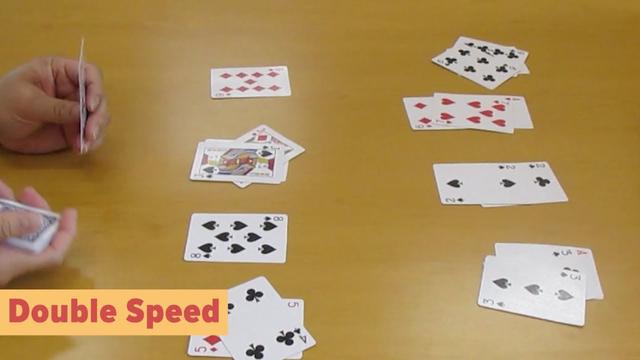Definition of double speed
Because CD capacity is about 700MB, DVD single-sided single layer (DVD-5) is 4.7GB (actually 4.37GB), DVD single-sided single layer capacity It is about 6.4 times that of a CD, so a 1x speed player can read a 700MB CD in 80 minutes. (700MB * 1024 / 150KB/s / 60 = 79.6min)
The 1x speed player can read a 4.7GB DVD in 60 minutes. (4.37GB * 1024 * 1024 / 1353KB/s / 60 = 56.6min)
The definition of 1x speed is not the same in daily practical situations, and it is also different from theoretical data. The 1x speed of CD is 150KB/s , The 1x speed of music CD is 172.3KB/s, and the 1x speed of DVD is about 1353KB/s.
The reading speed of the optical drive is based on the single speed of the 150KB/s data transfer rate. For example, the data transfer rate of the 24-speed optical drive is 3600KB/s. However, due to the limitation of the data reading method, the high-speed optical drive cannot always run at its nominal speed, but reaches the maximum data transfer rate when reading a certain position.
In order to obtain a higher data transfer rate, current high-speed optical drives mostly use CAV and PCAV data reading technologies. CAV (Constant Angular Velocity, Constant Angular Velocity) technology uses a constant motor speed to read disc data, which greatly increases the data transmission rate of the outer ring and shortens the average seek time. The nominal value of a high-speed optical drive, such as 32X, refers to the data transfer rate that can be achieved by CAV technology at 32 times the speed-4800KB/s. PCAV (Partial-CAV, Partial Constant Angular Velocity) technology is a combination of CLV (Constant Linear Velocity, Constant Linear Velocity) technology and CAV technology used in early low-speed (below twelve-speed) optical drives. CLV is used when reading inner circle data. , And when the motor speed reaches a certain speed to read the outer circle, the CAV method is used to achieve the maximum speed to maintain the stability of the inner and outer circle data reading and improve its random seek time. Nowadays, optical drives above 24X generally use CAV and PCAV data reading methods, and the average seek time is less than 90ms.
Double speed of CD and DVD
Double speed of DVD
1x: (1 times speed) basic transfer rate is 1353KB/s.
2x: (2 times the speed) the basic transmission rate is 2716KB/s.
4x: (4 times the speed) the basic transmission rate is 5432KB/s.
8x: (8 times speed) the basic transmission rate is 10864KB/s.
16x: (16 times the speed) basic transmission rate is 21728KB/s.
24x: (24 times the speed) the basic transmission rate is 32592KB/s.
Double speed of CD
The basic transmission rate of 1x (1 times speed) is 150KB/s.
2x (2x speed) basic transmission rate is 300KB/s
4x (4x speed) basic transmission rate is 600KB/s.
The basic transmission rate of 8x (8 times the speed) is 1200KB/s.
The basic transmission rate of 16x (16 times the speed) is 2400KB/s.
The basic transmission rate of 24x (24 times speed) is 3600KB/s.
32x (32 times the speed) basic transmission rate is 4800KB/s.
The basic transmission rate of 40x (40 times speed) is 6000KB/s.
The basic transfer rate of 48x (48x speed) is 7200KB/s.
52x (52 times the speed) basic transmission rate is 7800KB/s.
Time to read or burn the disc
(League value)
700MB CD | 4.37GB DVD | |
1x | 79.64min | 56.57min |
2x | 39.82min | 28.29min |
4x | 19.91min | 14.14min |
| 6x | 13.27min | 9.43min |
8x | 9.96min | 7.07min | tr>
12x | 6.64min | 4.71min td> |
16x | 4.98min | 3.54min p> |
24x | 3.31min | 2.36min |
32x | 2.49min | |
40x | 1.99min | |
48x | 1.65min | 52x | 1.53min |
Double speed of Blu-ray Disc
According to the Blu-ray Disc standard, the read/write speed of 1x speed is defined as 36Mb ps. However, because Blu-ray movies require a data transfer rate of at least 54Mbps, the most widely used is 2x speed (72Mbps). Of course, blue light can reach higher speeds. If we assume that the maximum speed of the disc is 10000rpm, it is possible to reach 12 times the speed on the outer circle of the disc (about 400Mbps). This is why the Blu-ray Disc Association (BDA) has planned to increase the speed to 8x (288Mbps) or higher in the future.

The storage capacity of Blu-ray single-sided single-layer discs is defined as 25GB, which is more than 5 times the capacity of current red-light DVD single-sided single-layer discs (4.7GB), which is enough to store more than 2 hours High-definition digital video content with a playback time, or standard TV programs with a playback time of more than 13 hours (VHS standard image quality, 3.8MB/s). This is only the capacity realized by single-sided and single-layer, just like traditional red DVD discs, Blu-ray can also be made into single-sided and double-layer, and double-sided and double-layer.
The capacity of a single-layer Blu-ray disc is 25GB, which is enough to burn a 4-hour high-definition movie. The double layer can reach a capacity of 50GB, which is enough to burn a high-definition movie up to 8 hours. And the capacity is 100GB or 200GB, the separation is 4 layers and 8 layers.
The launch of Blu-ray, in addition to being expected to stop the rewritable DVD standard dispute, its stronger market push is likely to be the high-definition digital television (HDTV) business in the world. Started successively within the scope.
